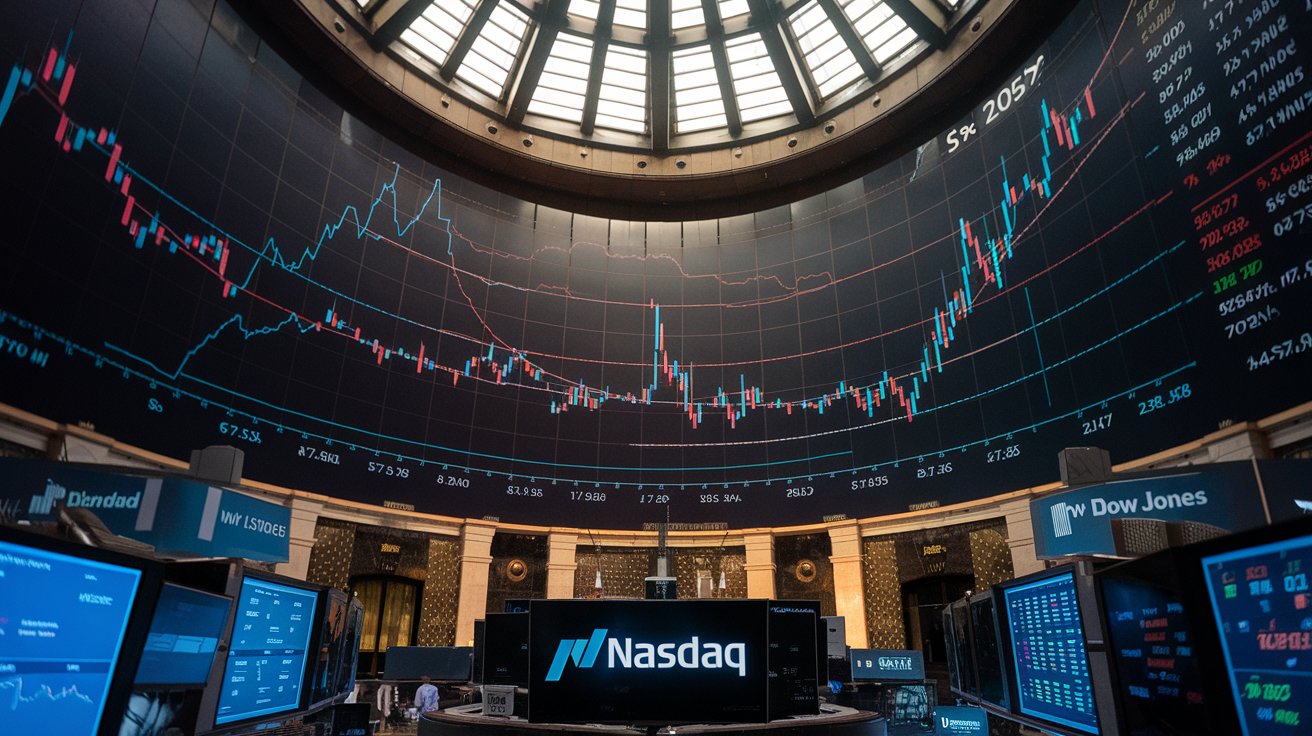U.S. Stock Futures Steady After Three-Day Winning Streak
After a three-day winning streak, U.S. stock futures showed signs of stability on Wednesday, as investors awaited critical economic data and tariff updates. Although the market had gained momentum, a sense of cautious optimism loomed, with many traders analyzing the broader economic environment.
1. Market Performance Overview
What’s Happening with Stock Futures?
The stock futures market has experienced some minor fluctuations following the three-day rally. Investors are on edge, awaiting crucial data that will likely determine the market’s next direction. The table below provides a snapshot of the recent futures movements.
Table: Stock Market Futures Performance Overview
| Index | Change (%) | Key Insights |
|---|---|---|
| S&P 500 Futures | -0.1% | A slight dip, showing caution after recent gains. |
| Nasdaq 100 Futures | -0.2% | Tech stocks leading the decline, particularly Nvidia. |
| Dow Jones Industrial Futures | +0.1% | Resilient, reflecting positive sentiment in the broader market. |
Despite the pullbacks in some sectors, the Dow Jones showed modest growth, highlighting a strong recovery for traditional industries. However, Nasdaq and S&P 500 experienced slight losses, particularly due to uncertainty in the tech sector.
2. Economic Indicators and Tariff Concerns
Understanding Key Economic Data
This section focuses on the economic reports that investors are closely monitoring. These reports could significantly impact stock market trends, particularly regarding GDP growth, employment data, and consumer confidence. In addition, tariff discussions continue to cause concern among traders, as changes in trade policies can have far-reaching effects on the economy.
Key Reports to Watch:
- U.S. GDP Estimates (Q1 2025): The GDP data for Q1 will be pivotal in assessing the overall health of the U.S. economy. A stronger-than-expected GDP growth could push stock prices higher.
- Unemployment Claims: This report reveals the number of people filing for unemployment benefits. High claims may signal a weakening labor market, which could negatively affect investor confidence.
- Consumer Spending: As consumer confidence remains a critical factor in economic recovery, any negative data regarding spending habits can dampen market sentiment.
Additionally, tariff concerns remain high. With new tariffs set to go into effect on April 2, sectors like technology and manufacturing may face higher costs and decreased global demand. This uncertainty has the potential to trigger further volatility in the markets.
3. Sector-Wise Market Movements
Which Sectors Are Leading and Lagging?
Different sectors react to economic conditions in various ways. Understanding which sectors are performing well or struggling can provide valuable insights into market trends.
Technology Sector
The technology sector faced challenges this week:
- Nvidia stocks dropped by 1.7% after news of U.S. restrictions on exports to Chinese tech companies, leading to fears of disrupted supply chains.
- Tesla shares decreased by 1%, despite an overall positive sentiment driven by Elon Musk’s recent moves to encourage employee stock holdings. This suggests caution among investors despite a generally positive outlook.
Retail Sector
Meanwhile, the retail sector performed well:
- Dollar Tree saw a 5% surge in its stock price after announcing the sale of its Family Dollar brand to refocus on its core business. This strategic move boosted investor confidence, and the stock surged accordingly.
4. Investor Sentiment and Market Outlook
What’s Affecting Investor Confidence?
Investors are cautiously optimistic, yet several factors are weighing heavily on market sentiment. Consumer confidence has dropped to a four-year low, which could indicate that people are becoming more cautious with their spending. This drop in confidence raises concerns about future economic growth, potentially leading to reduced consumer activity.
However, investors are closely monitoring the upcoming GDP growth estimates and unemployment data to determine whether the market will continue its upward trajectory. If the data signals continued economic strength, stock prices could rise again, especially in sectors like finance and energy.
5. Conclusion
What’s Next for the Stock Market?
The market’s future depends largely on the data points that will be released over the next week. Economic reports on GDP growth, unemployment claims, and consumer spending will give a clearer picture of where the economy is headed. Additionally, the ongoing trade tariff discussions will continue to influence investor sentiment.
For now, diversification remains a crucial strategy, as uncertain economic conditions could lead to volatility. Traders will need to stay informed and adapt their strategies as new data becomes available.





